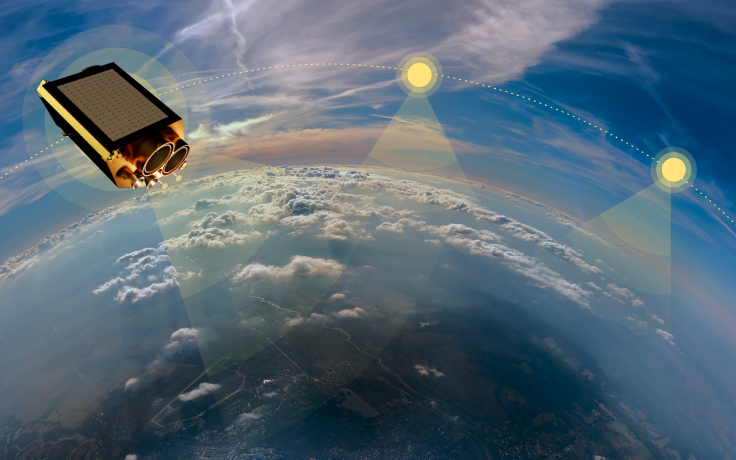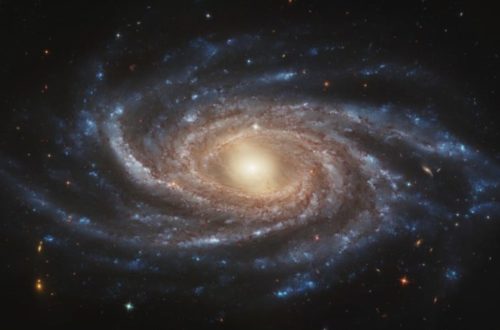Space-Supported Agriculture: How Space and Agriculture Are Linked

Historically, the link between space and agriculture might have appeared improbable or even absurd. However, with the swift progress in satellite technology, space-based resources have become essential for contemporary farming practices worldwide. Satellites are transforming food production, resource management, and our ability to tackle climate issues through near real-time agricultural monitoring and predictive analytics.
The Satellite-Agriculture Connection
Space technology is offering farmers unprecedented precision and efficiency. Satellite advancements, including high-resolution imaging and AI-powered analytics, enable near real-time tracking of crop health, soil conditions, and water usage. Innovations like crop monitoring system for better yield could drive a new agricultural revolution, helping farmers optimize yields while reducing environmental impact.
Satellites equipped with multispectral and hyperspectral sensors detect subtle changes in vegetation, identifying nutrient deficiencies, pests, and diseases before they become visible to the naked eye. This allows for targeted interventions, minimizing pesticide and fertilizer use. Additionally, satellite data supports precision irrigation, ensuring water is applied only where needed — a critical advantage in drought-prone regions.
AI and machine learning further enhance satellite capabilities by analyzing vast datasets to predict crop performance, weather impacts, and disease outbreaks. Specialized companies provide farmers with actionable insights through platforms that integrate space imagery with ground-based sensors.
Beyond remote farm monitoring, satellites aid in supply chain transparency, tracking crop conditions from field to market. This helps reduce waste of foodstuffs and ensures quality control. Governments and agribusinesses are increasingly adopting these tools to enhance food security and sustainability.
As space tech becomes more accessible, smallholder farmers in developing nations could also benefit, bridging the gap between traditional and high-tech farming. The synergy between satellites and agronomy promises smarter, greener farming for the future. Let’s discover the essential advantages of agriculture powered by space technology.
Key Benefits of Satellite-Driven Farming
Space-supported agriculture is changing the way food is grown, managed, and distributed. By leveraging high-resolution imagery and data from space, farmers and agricultural stakeholders are gaining unprecedented insights into their fields, enabling more informed decisions that improve efficiency, productivity, and sustainability. Here are some of the most significant benefits:
Precision Farming
One of the most transformative aspects of satellite technology in agribusiness is its role in enabling precision farming. Through advanced remote sensing, farmers can observe spatial variations in soil properties, crop health, and growth patterns across different areas of a field. This data enables them to apply water, fertilizers, and pesticides only where they are needed, in precise amounts. Instead of treating an entire field uniformly, orbital imagery helps create variable-rate application maps, ensuring that each section of the field receives optimal treatment. This level of accuracy not only boosts yields but also significantly reduces input costs and minimizes environmental impact. By avoiding over-application, farmers conserve resources and protect ecosystems from chemical runoff.
Early Detection of Issues
Satellite-aided farm tracking plays a critical role in the early detection of crop stress factors such as water scarcity, pest infestations, or nutrient deficiencies. Multispectral and hyperspectral imaging can detect subtle changes in plant health that aren’t visible to the naked eye, often weeks before symptoms appear physically. This proactive insight allows farmers to intervene quickly with targeted solutions, preventing the spread of diseases or minimizing the impact of drought. As a result, crop losses are reduced, and yields are better protected, contributing to both nutrition security and farm profitability.
Seasonal Planning and Forecasting
Effective seasonal planning depends heavily on accurate data — and space imagery delivers just that. By observing real-time weather developments, soil moisture trends, and vegetation indices, farmers can make informed decisions on when to plant, irrigate, and harvest. Additionally, satellite records provide long-term datasets that help analyze historical climate patterns and field performance over time. In an era marked by climate variability, these insights are vital. Farmers can better adapt to unpredictable conditions and mitigate the risks associated with unseasonal rainfall or prolonged droughts, leading to more resilient farming practices.
Disaster Management
Natural disasters such as floods, droughts, and wildfires pose serious threats to farming. Orbital monitoring provides timely assessments of these events, allowing for rapid response and efficient damage evaluation. This is especially valuable for recovery and insurance processes. When farmers have access to satellite-verified data showing the extent and impact of a disaster, it becomes easier to claim compensation or seek government aid. Additionally, early warning systems based on space data can alert communities before disasters strike, helping them take preventive action and reduce losses.
Global Food Security
Beyond individual farms, satellites serve a crucial function in supporting global food security. Governments, NGOs, and international organizations rely on orbital data to monitor agricultural trends at a regional or global scale. This includes tracking crop performance, predicting harvest outputs, and identifying areas at risk of food shortages. Such information is essential for managing foodstuffs distribution networks, responding to humanitarian crises, and implementing food policies. With the growing global population and increasing pressure on food systems, space-supported agriculture is becoming a cornerstone in ensuring that food production is efficient, equitable, and sustainable.
In summary, satellite-driven farming offers a future-focused solution to many of the challenges facing modern farming. From micro-level precision on individual farms to macro-level insights for global food systems, space technology is not just supporting agronomy — it’s reshaping it. Now, let’s explore the emerging trends and future possibilities within the agri-space.
The Future of Agri-Space Synergy
With global demand for efficient and sustainable food production increasing day by day, farming-space technology convergence is becoming increasingly crucial than ever before. Next-generation satellites are being designed to carry advanced sensors capable of capturing ultra-high-resolution images and performing real-time environmental observations. At the same time, machine learning algorithms are modernizing how this data is analyzed, making it faster and more accurate to assess crop health, soil conditions, and climatic trends.
These technological advancements are powering intelligent platforms, such as remote crop monitoring solutions, that transform raw space data into actionable insights for farmers. These tools enable smarter decision-making at every stage of the agricultural cycle — from planting to harvesting — enhancing productivity while reducing waste and resource consumption.
Looking ahead, sustained investment in satellite infrastructure and space-supported agriculture will be key to building resilient food systems. By bridging the gap between orbit and Earth, this growing agri-space collaboration offers a powerful path toward addressing global food security and ensuring that future generations have access to safe, nutritious, and sustainably produced food.
Would you like to receive similar articles by email?





